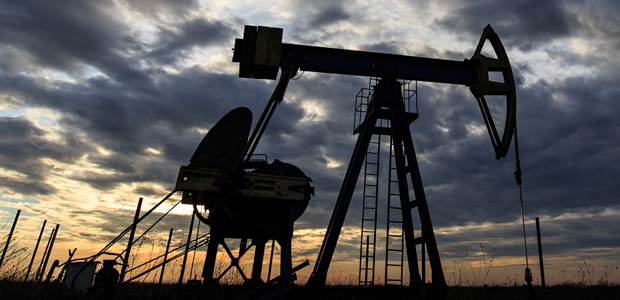
Let's Be Frank about Fracking: Is Unconventional Gas and Oil Drilling Really Worth It?
- By Julia Troute
- Jul 23, 2015
Hydraulic fracturing, commonly referred to as “fracking,” is a drilling technique used to extract oil or natural gas from deep beneath the ground. The process involves drilling down into the earth and injecting fluid at a high pressure in order to fracture shale rocks and release the natural gas or oil inside. Experts also call this a “frac job” or “frac unit.” The terminology surrounding “fracking” refers to how the rocks are fractured apart by the high pressure mixture consisting of water, sand, and a variety of chemicals. There are more than 500,000 active natural gas wells in the US. It can take anywhere from 1-8 million gallons of water and 40,000 gallons of chemicals to complete each fracturing job. If that wasn’t enough cause for concern, approximately 600 chemicals are used in fracking fluid (also known as slickwater), which include, but are not limited to, known carcinogens and toxins such as lead, uranium, mercury, ethylene glycol, radium, methanol, hydrochloric acid, and formaldehyde. Once the water is mixed with sand and chemicals, the “fracking fluid” is pressure injected into the ground through a drilled pipeline. A typical well can be “fracked” 18 times, so at any given moment, the US requires 72 trillion gallons of water and 360 billion gallons of chemicals just to run the gas wells already in existence. Meanwhile, 13,000 new wells are drilled every year.
When this toxic, high-pressure mixture of chemicals, water and sand reaches the end of the well, the nearby shale rock cracks, creating fissures where oil or natural gas flows into the well. But, that’s not the only thing that happens. Once the underground rock is shattered and proppants are pumped into place, trapped reservoirs of gas and oil are released and pumped back to the surface, along with millions of gallons of "flowback" liquid, according to the EPA. The flowback liquid contains water and a number of contaminants, including radioactive material, heavy metals, hydrocarbons and other toxins. This wastewater is stored on the fracking site in pits, injected into deep underground wells or disposed of off-site at a wastewater treatment facility. Aside from being highly toxic, flowback water has been directly linked to other unprecedented ecological issues. For instance, since 2008, the northern region of Texas has experienced four swarms of earthquakes—over 130 temblors in all. Concentrated within the Dallas metropolitan area, the frequency of this activity has dramatically increased in the last year. In January alone, there were 25 small quakes. And while they were relatively minor in size, until 2008, the DFW area had only one recorded earthquake in the last 58 years. Susan Hough, a seismologist at the USGS and the California Institute of Technology, has studied seismic activity for years and says the shaking pattern "fits the mold of induced quakes." Basically, this sudden rush of seismic commotion could be a result of human activity, namely the disposal of a byproduct of hydraulic fracturing—flowback water.
Besides the flowback, toxic chemicals and methane gas are also released during the actual fracking process, leaching out from the system and contaminating nearby groundwater. Studies have shown that methane concentrations are over 17 times higher in water wells near fracturing sites than in normal wells—water used for drinking and bathing in nearby cities and towns. There have been over a thousand documented cases of water contamination next to areas of gas drilling. With this contamination comes an increase in medical issues suffered by those living near these sites—cases of sensory, respiratory, and neurological damage have all been linked to the ingestion of contaminated water. While cardiology is the category of inpatient records most strongly associated with proximity to and number of wells, other visits listed under dermatology, neonatology, neurology, oncology, and urology have also been linked to areas with a substantial increase in hydraulic fracturing and active wells.
In about a decade, the number of natural gas wells has nearly doubled in the United States. As of 2014, “at least 15.3 million Americans lived within a mile of a well that has been drilled since 2000. That is more people than live in Michigan or New York City.” In a recent study, Dr. Reynold Panettieri Jr. and a team of researchers compared hospital visits in Bradford, Susquehanna, and Wayne—three counties of rural Pennsylvania—from 2007 (when drilling began) to 2011. They found a higher rate of hospital visits in the two counties with a heavy gas presence. But the medical issues in these counties don’t stem from water contamination alone; each gas well requires an average of 400 tanker trucks to carry water and supplies to and from the site. Panettieri noted that “[with fracking] there's a lot of diesel exhaust, noise and social stress. Hydraulic fracturing changes the complexion of the town because of the number of people coming through… the idling trucks and the noise." Relying on 95,000 inpatient records, Panettieri and his researchers called their study "the most comprehensive one to date to address the health impact of unconventional gas and oil drilling…. In Bradford and Susquehanna, where there was a substantial increase in hydraulic fracturing and active wells, [there] were more cardiovascular hospitalizations as well as more neurologic," Panettieri said. "The association was in proximity to the wells. The closer to active wells, the more Pennsylvanians are getting hospitalized…." In this study, Wayne County served as the perfect control group to Bradford and Susquehanna, with nearly identical age, race, education and income demographics, Panettieri said. But, in comparison, the residents of Wayne County are relatively happy and healthy; the only variable in this experiment was the gas industry.
About the Author
Julia Troute is a freelance associate content editor.